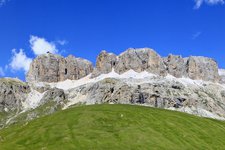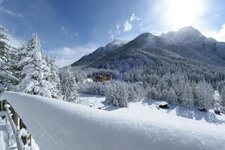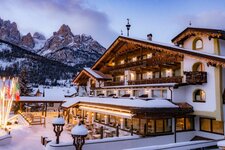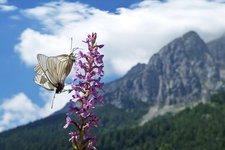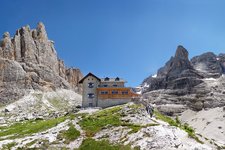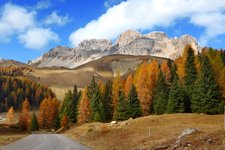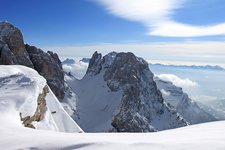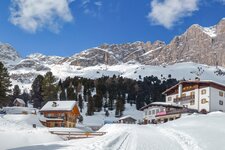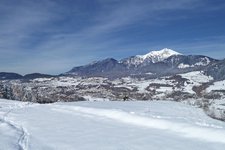The “pale mountains” - a world-famous mountain range and Natural World Heritage site
Image gallery: The Dolomites
The peaks of the Dolomites are a section of the Alps between the Adige and the Piave rivers in the provinces of Trento, Bolzano and Belluno. This mountain range is particularly famous for its stunning beauty, as well as the 3,343 m high Marmolada, a UNESCO World Heritage Site since 2009.
The seemingly endless variety of these mountains includes massive towers, bastions, pinnacles and other stunning rock formations whose incomparable appeal stands out even more thanks to the phenomenon of the "Enrosadira", the spectacular, reddish-orange colour the Dolomites (also known as Monti Pallidi due to the pale colour of their rocks) take on at sunset.
The Dolomites were named after the dolostone they are made of. This particular type of rock was discovered by Déodat de Dolomieu, a French geologist and pioneer who carried out the first studies on this sedimentary carbonate rock with a high percentage of the mineral dolomite and traces of limestone and evaporites in 1791. However, it was not until 1864 that the name Dolomites was introduced and first used by the English painters and naturalists Josiah Gilbert and George Churchill who released a report on their trips in the Dolomites. In this work, they refer to these mountains as "The Dolomite mountains", paving the way for the long tourism and alpinism history of the entire region.
The Marmolada, the Sella Group, the Catinaccio, the Brenta Dolomites and the Pale di San Martino are household names among mountain lovers from all over the world by now: discover the fascinating landscapes Trentino's Dolomites have to offer and live unforgettable experiences both in summer and winter.
- Highest peak: Marmolada (3,343 m)
- Main ranges: Marmolada, Gruppo del Sella, Gruppo del Sassolungo, Catinaccio, Latemar, Pale di San Martino, Brenta Dolomites
- Major passes: Passo Sella, Passo Pordoi, Passo Fedaia, Passo S. Pellegrino


-01.jpeg)
